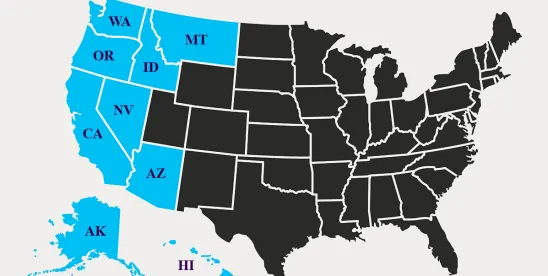A federal district court recently granted a motion to dismiss claims that defined contribution plan fiduciaries breached their fiduciary duties of loyalty and prudence, and violated ERISA’s anti-inurement and prohibited transaction rules, by using forfeited funds to satisfy a portion of the employer’s matching contribution obligations where the plan also permitted using such forfeitures to pay administrative expenses. Hutchins v. HP Inc. et al, No. 23-cv-05875, 2024 WL 3049456 (N.D. Cal. June 17, 2024). Over the past several months, at least ten complaints have been filed against plan sponsors and administrators asserting very similar claims; the Hutchins court is the second to decide a motion to dismiss, and the first to grant such a motion.
The plan at issue is a stock bonus, defined contribution plan, which includes an employer match funded by HP, the plan sponsor and administrator. When a participant in the plan has a break in service before satisfying the plan’s vesting requirements, unvested employer contributions in the participant’s plan account are forfeited. The plan provides that forfeited amounts may be used, among other things, to reduce employer contributions paid by HP or to pay plan expenses, which are paid directly by the plan and result in an annual charge of $34 to participant accounts. Plaintiff alleged that by using forfeited amounts to reduce HP’s employer matching obligation instead of to pay plan expenses, HP and the plan committee breached their fiduciary duties, violated ERISA’s anti-inurement rule, and engaged in prohibited transactions.
The court granted defendants’ motion to dismiss in its entirety, with leave to amend. Before evaluating the claims, the court rejected defendants’ threshold arguments that: (i) plaintiffs’ claims were foreclosed, as a matter of law, by Treasury Department regulations that condone using forfeitures to reduce employer contributions; and (ii) defendants were not acting as fiduciaries in connection with the challenged conduct. As to the first argument, the court concluded that, standing alone, 26 C.F.R. § 1.401-7(a) did not defeat plaintiff’s claims because that regulation does not apply to stock bonus plans; nor did a regulation proposed by Treasury in 2023, since it has not been finalized. And although the court agreed that defendants acted in a settlor capacity in including a plan term granting discretion as to how forfeitures may be used, it concluded that defendants acted as fiduciaries in how they exercised this discretion.
Nonetheless, the court dismissed plaintiff’s claims as implausible.
First, in dismissing the fiduciary breach claims, the court construed plaintiff’s theory as requiring a fiduciary, irrespective of the circumstances or context, to always use forfeitures to pay plan expenses instead of to reduce employer contributions if the plan gives the fiduciary the choice. The court held that the breadth of this theory rendered it implausible because: (i) it conflicted with the Supreme Court’s decision in Fifth Third Bancorp v. Dudenhoeffer, 573 U.S. 409 (2014), which “emphasize[d] that the plausibility of allegations of breach of fiduciary duty should consider the context and circumstances of the fiduciary’s actions”; (ii) it would improperly expand ERISA’s fiduciary obligations to create an unqualified duty to pay administrative costs, which does not exist; and (iii) it ran contrary to Congress’ and the Treasury Department’s settled understanding that forfeitures could be used to reduce employer contributions.
Second, the court dismissed plaintiff’s anti-inurement claim because that rule is designed to prevent reversion or diversion of plan assets to the sponsor, and allegations of an indirect or incidental benefit to an employer are insufficient to state a claim for violation of the rule. Defendants did not remove the forfeited funds from the plan but instead used them to pay pension benefits to participants. The court concluded that the reduction to HP’s future employer matching obligations was a benefit that was merely incidental to the payment of benefits.
Finally, the court dismissed the prohibited transaction claims. In so ruling, the court observed that the Supreme Court has concluded that payment of benefits is not a “transaction” under the prohibited transaction rules, and that the types of transactions prohibited by the rules “are commercial bargains” with plan insiders that pose a risk of plan underfunding or other harm to the plan. In contrast, here the forfeited amounts remained plan assets and were “merely reallocated to provide pension benefits” to other employees as matching contributions, and plaintiff failed to allege that the use of forfeitures put the plan at risk of underfunding.
Proskauer’s Perspective
The court’s detailed and thoughtful opinion in Hutchins is promising for similarly-situated plan sponsors and administrators, particularly given the wave of lawsuits challenging plans’ use of forfeitures that have been filed since late 2023, and the fact that the first court to decide a motion to dismiss one of these complaints denied the motion with, according to the Hutchins court, a “conclusory” analysis. As the Hutchins decision observed, plaintiffs are pursuing relatively novel theories in these cases. It remains to be seen whether any trends will develop among the district courts tasked with deciding whether the claims should survive dismissal.



 />i
/>i

